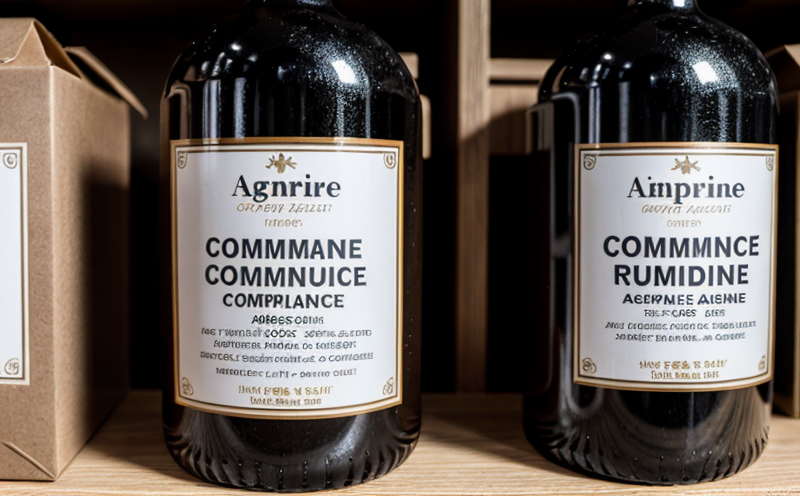ISO 8124-1 Toy Age Suitability Evaluation
The ISO 8124 series of standards provides a framework for evaluating the safety and suitability of toys for different age groups. Specifically, ISO 8124-1: Safety of Toys - Part 1: Mechanical and Physical Aspects focuses on identifying whether a toy is suitable for its intended age group.
This evaluation involves assessing various mechanical properties such as sharp edges, points, and small parts that could pose a choking hazard. Additionally, the test evaluates the durability of toys to withstand normal use by children without breaking down into smaller pieces or releasing harmful substances. By ensuring compliance with these standards, manufacturers can protect children from potential injuries while playing.
The testing process begins with careful examination of the toy’s design and packaging label to confirm its intended age group. Then, engineers perform a series of tests using standardized methods described in ISO 8124-1. These include:
- Checking for sharp edges and points
- Assessing the stability of the toy when placed on various surfaces
- Evaluating the strength of the toy by applying force in different directions
- Determining the resistance to abrasion and wear
- Testing the resistance to water and chemicals that may come into contact with the toy during use
- Checking for flammability if the toy contains materials like fabric or plastic
- Assessing the potential for the release of harmful substances, including lead, cadmium, and phthalates
The results from these tests are documented in a detailed report that includes photographs, diagrams, and descriptions of any non-compliant features found during testing. This information is crucial for manufacturers to make necessary adjustments before releasing their products to the market.
Compliance with ISO 8124-1 ensures that toys meet international safety standards, thereby protecting children from accidents and injuries caused by unsafe playthings. It also helps build consumer trust in toy brands and fosters a safer environment for young users.
Why It Matters
The importance of ensuring toy age suitability cannot be overstated, especially given the diverse range of developmental stages children go through. At each stage, toys play a critical role in fostering cognitive and physical development. Therefore, it is essential to determine which toys are appropriate for specific age groups.
For instance, younger children may require toys that promote gross motor skills such as crawling or walking, while older children might benefit from educational toys that enhance problem-solving abilities. By accurately grading toys according to their intended age group, manufacturers can ensure that the toy meets developmental milestones and safety requirements appropriate for each child's stage of growth.
The international nature of trade in consumer goods means that compliance with global standards like ISO 8124-1 is not just a recommendation but often a requirement. Many countries require toys to meet specific age grading regulations, which can vary significantly from one country to another. For example:
- Some countries mandate clear labeling indicating the recommended age range for each toy.
- Others may enforce strict testing protocols that must be adhered to before a toy can be sold domestically or exported.
Failure to comply with these standards not only risks legal penalties but also tarnishes the brand's reputation. Moreover, non-compliance could lead to product recalls and damage consumer trust in the company’s products.
In summary, accurate age grading and labeling are vital for both safety reasons and regulatory compliance. They contribute significantly to protecting children from potential injuries and ensuring that toys meet the developmental needs of their intended users.
Industry Applications
The application of ISO 8124-1 in toy testing is particularly relevant for:
- Manufacturers developing new toys aimed at specific age groups.
- R&D engineers tasked with designing safer and more durable toys.
- Quality managers responsible for ensuring product conformity to international standards.
- Compliance officers who oversee the implementation of safety regulations within their organizations.
For manufacturers, this test ensures that new designs are suitable for their target age groups. R&D engineers can use the results from ISO 8124-1 testing as feedback to refine future product iterations. Quality managers rely on these tests to maintain consistent quality across production batches. Compliance officers ensure ongoing adherence to all relevant regulations.
The process also benefits retailers and distributors by providing them with reliable information about toy safety and age appropriateness, which they can use when advising customers or organizing displays within their stores.
Why Choose This Test
Selecting ISO 8124-1 for your toy testing needs offers several advantages:
- Comprehensive Coverage: This test covers all mechanical and physical aspects that could pose a risk to children.
- International Recognition: Compliance with ISO standards ensures broad acceptance across different markets.
- Expertise and Experience: Our laboratory employs highly skilled engineers who specialize in toy safety testing.
- State-of-the-Art Facilities: We utilize cutting-edge equipment to ensure accurate and reliable test results.
- Regulatory Guidance: Our team stays updated on all relevant regulations, helping you stay ahead of changing requirements.
- Rapid Turnaround Times: We offer efficient turnaround times without compromising the quality of our services.
- Certified Reports: Each test is accompanied by a detailed report that meets international standards and can be used for certification purposes.
In addition to these benefits, choosing ISO 8124-1 testing ensures that your toys meet the highest safety standards. This not only protects children but also enhances brand reputation and customer trust.





